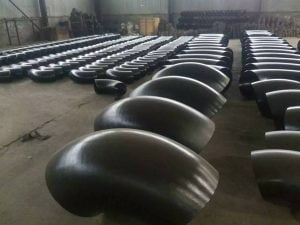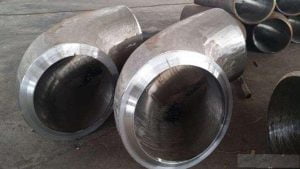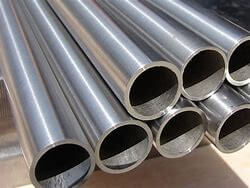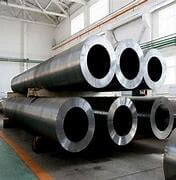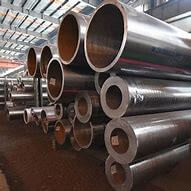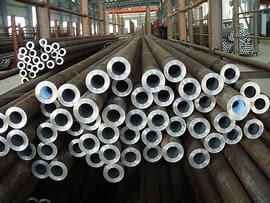Bending is the use of sets of bending equipment for bending, divided into cold simmer and hot push two kinds of processes. No matter what kind of machinery and equipment and pipelines, most of them are used to bend the pipe, mainly for oil, gas and liquid transmission, engineering bridge construction, etc.
Standard system
International pipe flange standards mainly have two systems, namely, Germany DIN (including the former Soviet Union) as the representative of the European pipe flange system and the United States ANSI pipe flange as the representative of the American pipe flange system. In addition, there are Japanese JIS pipe flanges, but in petrochemical installations are generally used only for public works, and have less influence in the international arena. Now the countries pipe flange is introduced in the following:
1, Germany and the former Soviet Union as the representative of the European system pipe flange
2, the American system pipe flange standards, represented by ANSI B16.5 and ANSI B 16.47
3, the British and French pipe flange standards, two sets of pipe flange standards in each country.
The international common pipe flange standards can be summarized as two different, and not interchangeable pipe flange system: a European pipe flange system represented by Germany; the other is the American pipe flange system represented by the United States.
IOS7005-1 is a standard promulgated by the International Organization for Standardization in 1992, the standard is actually a pipe flange standard that combines two series of pipe flanges from the United States and Germany.
Bend classification
1, divided by material:
Carbon steel: ASTM/ASME A234 WPB, WPC
Alloy: ASTM/ASME A234 WP 1-WP 12-WP 11-WP 22-WP 5-WP 91-WP911, 15Mo3 15CrMoV, 35CrMoV
Stainless Steel:ASTM/ASME A403 WP 304-304L-304H-304LN-304N
ASTM/ASME A403 WP 316-316L-316H-316LN-316N-316Ti
ASTM/ASME A403 WP 321-321H ASTM/ASME A403 WP 347-347H
Low temperature steels:ASTM/ASME A402 WPL3-WPL 6
High performance steel:ASTM/ASME A860 WPHY 42-46-52-60-65-70
Cast steel, alloy steel, stainless steel, copper, aluminum alloy, plastic, argon chrome leaching, PVC, PPR, RFPP (reinforced polypropylene), etc.
Aluminum alloy 3003, 6061, copper, purple copper, brass
2、Divided into pushing, pressing, forging, casting, etc. by the production method.
3、It can be divided into national standard, electric standard, ship standard, chemical standard, water standard, American standard, German standard, Japanese standard, Russian standard, etc. by the manufacturing standard.
4, according to its radius of curvature to divide: can be divided into long-radius elbow and short-radius elbow. Long-radius elbow refers to its radius of curvature is equal to 1.5 times the outer diameter of the pipe, that is, R = 1.5D; short-radius elbow refers to its radius of curvature is equal to the outer diameter of the pipe, that is, R = 1.0D. (D is the elbow diameter, R is the radius of curvature).
5, if divided by pressure level: there are about seventeen kinds, and the U.S. pipe standards are the same, there are: Sch5s, Sch10s, Sch10, Sch20, Sch30, Sch40s, STD, Sch40, Sch60, Sch80s, XS; Sch80, SCH100, Sch120, Sch140, Sch160 , XXS; the two most commonly used are STD and XS.
Usage
The main reasons for the decline in the quality of the bend caused by the analysis and attention to the method:
1, pure bending, the tube in the external force distance M under the action of its neutral layer of the outer arm wall by tensile stress & 1 role and thinning, the inner side by compressive stress. The action and thickening, combined forces N1 and N2 make the tube cross-sectional changes. Based on this factor, the main reason for the decline in the quality of the bend is the RX and SX so, GBJ235-82, the RX value for various pressure levels and the amount of thinning on the outside are clearly defined, the purpose is to control the value of RX and SX, so as to ensure quality.
2, the previous article has been said, bending the material outside of the tension, the inner side of the neutral axis is under pressure location with the bending method and different, in the top bending type (compression bending) work neutral axis in the outer wall from about 1/3, in the spin bending (back bending type) work, the neutral axis in the outer wall from 2/3. Therefore, thin-walled pipe bending, the use of spin bending method is beneficial.
3, the accuracy of the bending tire is also one of the factors affecting the quality of bending. We bend the tire manufacturing, in addition to the specification size requirements to control a certain tolerance range, but also require users to use the corresponding bend in accordance with the bending pipe diameter selection.
4, the pipe itself can bend performance and surface corrosion, may also affect the quality of the bend. Site construction, the operator also needs to understand the material being processed pipeline, processing performance and surface corrosion to make production judgments.
5, now provides R. (bending radius / pipe outside diameter) relationship curve for the user in the selection of pipe diameter and wall thickness relationship for reference. Reflect the relative bending radius, the relative wall thickness of the impact on the quality of pipe bending, according to the acceptance specifications for pipeline processing: cold bending of steel pipelines for, low pressure for 4D, high pressure for 5D. So our bending tire design for R = 4D (special circumstances are determined separately), so for our factory bender mainly to choose the relative wall thickness SX, the upper part of the chart for the mandrel-free area, the middle of the chart for the ordinary mandrel area, the lower part of the chart For the special mandrel area. Due to the special mandrel design and manufacturing are very difficult, the operation is not very convenient, so generally I do not supply. Special circumstances can be agreed upon.
6, the impact of lubrication on product quality in the molding process:
Companies in the traditional bending production process, in order to get a better bending surface quality, will take many approaches, including: the use of more advanced high-grade bending machine, with higher strength mold, or the use of lubrication products and other methods. The use of high-grade bending machine and high strength mold, companies often need to invest very large sums of money to complete, only the use of pipe bending lubrication products are relatively inexpensive and fast to achieve the requirements of corporate product quality. But in the traditional production process: oil-based bend lubrication products can meet the requirements of the bend quality in the production of bends, but the oil-based bend lubrication products are not easy to clean and environmental pollution is very prominent, so that companies must use more means to eliminate the impact of the final product quality because of the use of oil-based bend lubrication products, to invest more energy and money. The arrival of IRMCO bend water-based grease is to meet the requirements of enterprises on the quality of bend products, but also to avoid and reduce the use of oil-based bend lubrication products and increased investment, completely optimize the production process.
